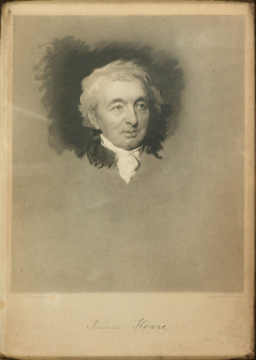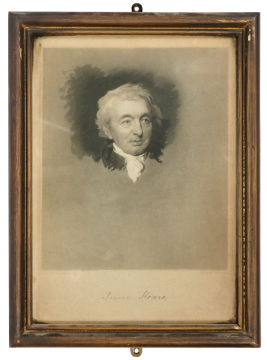Explore Collections


You are here:
CollectionsOnline
/
Portrait of Prince Hoare
Browse
Charles Turner ARA (1774 - 1857), engraver
After Sir Thomas Lawrence PRA (1769 - 1830)
After Sir Thomas Lawrence PRA (1769 - 1830)
Portrait of Prince Hoare
Published 25 July 1831
Engraving
Museum number: P165
On display: Breakfast Room
All spaces are in No. 13 Lincoln's Inn Fields unless identified as in No. 12, Soane's first house.
For tours https://www.soane.org/your-visit
Curatorial note
This engraving is after an unfinished portrait in oils of the painter and playwright Prince Hoare (1755-1834). "Prince" was his given name (after his father's brother, a sculptor), not a royal title. He was born in Bath, the son of the painter William Hoare who became Governor of the Foundling Hospital in London in 1744.
Prince Hoare won a prize for drawing from the Society of Arts in 1772 and in 1773 entered the Royal Academy Schools, where he may well have met John Soane for the first time. Hoare visited Rome in 1776, where he studied under Mengs with Fuseli and Northcote, before returning to England in 1780 - his time there overlapping with Soane's Grand Tour (1778-80).
He exhibited at the Royal Academy between 1781 and 1785 before he had to stop painting due to ill health. He then took up literary pursuits, writing mostly light comedies, some of which were set to music by Stephen Storace (1763–96), including No Song, No Supper (1789) and The Prize (1792) which met with considerable success: this brought him into Soane's orbit through Nancy Storace, the composer's brother. Hoare maintained close friendships with artists and in 1799 became Secretary for Foreign Correspondence to the Royal Academy, publishing numerous volumes of correspondence, Academic Annals of Paintings (1805; 2nd edn, 1809) and books of art criticism as well as a collection of essays (some his own work) entitled The Artist (2 vols., 1809–10). He also produced the Memoirs of Granville Sharp (1820), the British abolitionist, based on his manuscripts and material from the African Institution in London.
In his later years Prince Hoare lived mainly in Brighton for his health and he died there as the consequence of a carriage accident on f22 December 1834.
Prince Hoare won a prize for drawing from the Society of Arts in 1772 and in 1773 entered the Royal Academy Schools, where he may well have met John Soane for the first time. Hoare visited Rome in 1776, where he studied under Mengs with Fuseli and Northcote, before returning to England in 1780 - his time there overlapping with Soane's Grand Tour (1778-80).
He exhibited at the Royal Academy between 1781 and 1785 before he had to stop painting due to ill health. He then took up literary pursuits, writing mostly light comedies, some of which were set to music by Stephen Storace (1763–96), including No Song, No Supper (1789) and The Prize (1792) which met with considerable success: this brought him into Soane's orbit through Nancy Storace, the composer's brother. Hoare maintained close friendships with artists and in 1799 became Secretary for Foreign Correspondence to the Royal Academy, publishing numerous volumes of correspondence, Academic Annals of Paintings (1805; 2nd edn, 1809) and books of art criticism as well as a collection of essays (some his own work) entitled The Artist (2 vols., 1809–10). He also produced the Memoirs of Granville Sharp (1820), the British abolitionist, based on his manuscripts and material from the African Institution in London.
In his later years Prince Hoare lived mainly in Brighton for his health and he died there as the consequence of a carriage accident on f22 December 1834.
Literature
Kenneth Garlick, Sir Thomas Lawrence: a Complete Catalogue of the Oil Paintings, Oxford, 1993, No. 411
Sir Walter Armstrong, Lawrence, 1913, p.139
Sir Walter Armstrong, Lawrence, 1913, p.139
Soane collections online is being continually updated. If you wish to find out more or if you have any further information about this object please contact us: worksofart@soane.org.uk




